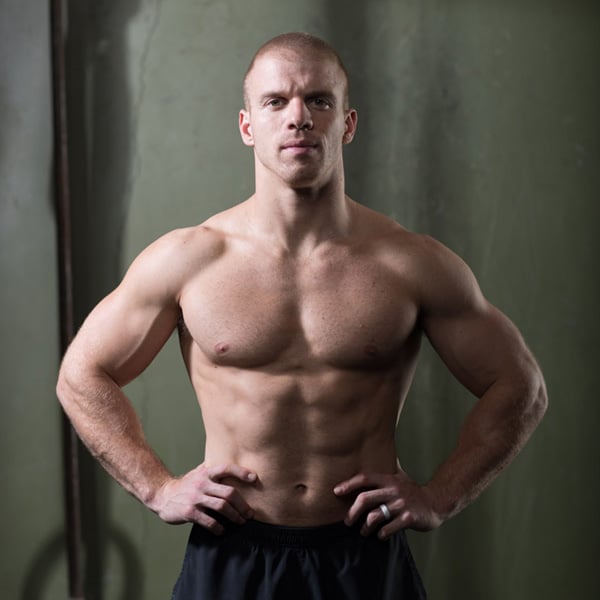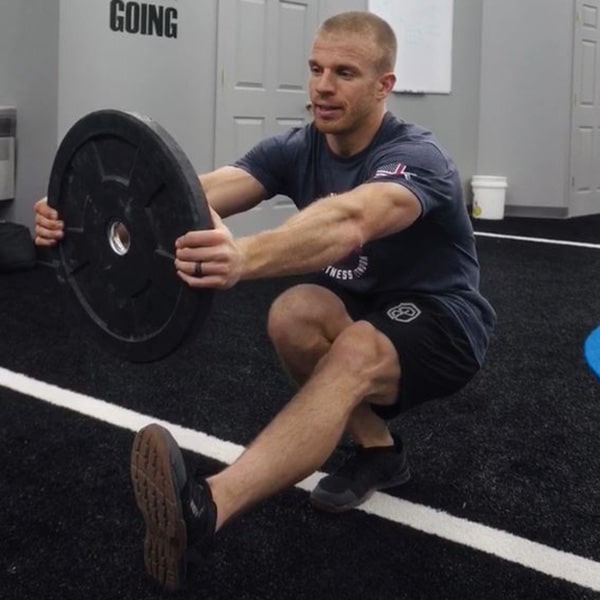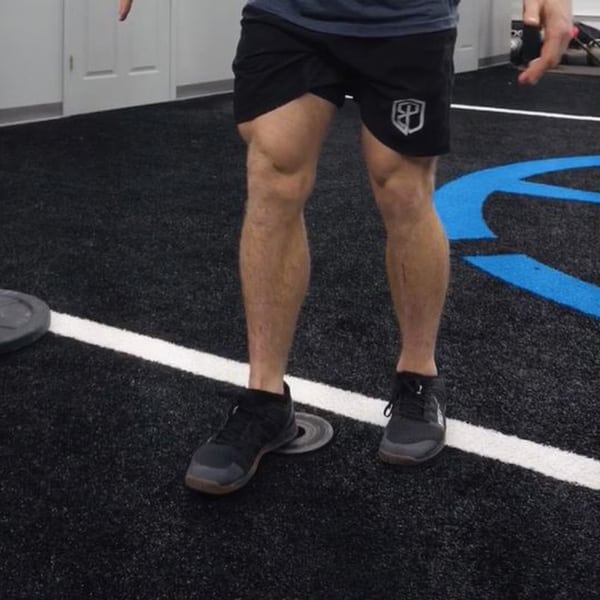Pistol Tips | The Ultimate Single Leg Squat with Scott Panchik

Single leg squats are beneficial for increasing stability and improving balance, which are two key components of athletic performance. Plus, they help build equal strength in each leg. In a way, they are more functional than standard squats. When you run, walk, hike, or cycle, one leg is working at a time. Rarely are both feet moving in tandem and using combined strength. Single leg squats help train your body more specifically for your sport. CrossFit Games Athlete Scott Panchik shares some tips and tricks for one of the most popular types of single leg squats, the pistol squat.
How to Pistol Squat
The pistol squat is a type of single leg squat that’s seen in many CrossFit workouts and competitions. It’s a simple movement, but requires a lot of coordination, balance, and flexibility.
- Plant one foot flat on the ground
- Hover your opposite leg out in front of your body
- As you descend with the grounded leg, keep your other leg as straight as you can as it moves out in front of your body.
- Keep your arms out in front of your body to help balance. Tip – you may find that it’s easier to grab your toe on the straightened leg as you get to the bottom of the squat
- Once your extended leg is parallel to the ground, ascend from the bottom position
- Set down your foot once you have stood all the way up
- Complete desired amount of reps and then alternate legs
Tips for Scaling the Pistol Squat
Use these tips to scale until you can do the standard movement on your own.
Counterbalance: Beginners may have a difficult time balancing while attempting to squat. A great way to scale the movement is to use a weight as a counterbalance while dropping into the squat. Hold the plate out in front of you as you descend and then pull the weight back into your chest as you come back up.
Flexibility in the Ankles: Many people struggle with flexibility in their ankles. If that’s the case, then this may be a great option for you. Take a small change plate and lay it flat on the ground. Place the heel of the leg you will be squatting with on top of the plate and keep your toes on the ground. This set up will put you up onto the middle part of your foot, allowing you to have better flexibility and range of motion as you drop down into the squat and come back up into extension. Lifting shoes can also create the same effect and may be used instead of a change plate.
Single Leg Squat Recovery
Any single leg squat is a tough movement to conquer, but pistol squats add an additional layer of difficulty. Recovering from a pistol workout is key to eliminate soreness and repair the damage. At the 2019 CrossFit Games, competitors had to complete “Mary” – a 20 minute AMRAP of 5 handstand pushups, 10 pistol squats, and 15 pull ups. Scott Panchik ended up doing over 20 rounds. By the end of the event, his body was exhausted. To recover from the pistols, Scott used Marc Pro to flush out his legs.

Scott’s Pistol Squat Leg Placement for Marc Pro
Right Leg
- One pad on the bottom of the VMO
- One pad on the upper quad
Left Leg
- One pad on the bottom of the VMO
- One pad on the upper quad
Make sure your legs are in a relaxed position and slowly turn the intensity up. A 30-60 minute session should do the trick, but if the workout really fatigued you, use the device for longer.
You may also be interested in:
Nutrition for Athletes: 5 Ways to Boost your Health and Performance
How to Barbell Shoulder Press: An 8-Step Guide from Noah Ohlsen

